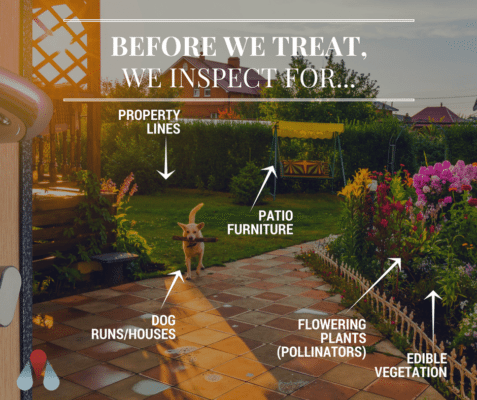
Have you ever been swarmed by a rodent infestation, or been plagued by a horde of the creepy crawlies? Have you avoided calling a pest control company because you believed they were going to spray their nasty chemicals all over the place and make everything a toxic wasteland? Well, think again.
Modern Pest Services understands the importance of both their mission of protecting you from pests, as well as their responsibility to be as environmentally conscientious as possible. At Modern, we practice IPM, or Integrated Pest Management, as well as Eco-Friendly pest control measures.
What is IPM?
IPM includes things like exclusion, which is to make a structure more secure and challenging for pests to infiltrate, as well as, making sure things are kept clean and free from clutter. Eco-Friendly pest control methods may also include things like avoiding spraying anything onto flowers where bees do their business and using materials that are more environmentally friendly.
In truth, IPM is a comprehensive approach to pest control, with the responsibilities shared between the client and the pest control firm.
There are six basic components to IPM:
- Monitoring: Regular site inspections, will allow professionals to determine the nature and the level of the infestation so treatments can be more accurate.
- Record-Keeping: This is essential. It allows professionals to recognize trends and changes in pest pressure. Therefore, they should keep detailed records of activity for each location.
- Action Levels: Pests are rarely eliminated. It’s vital to understand the level of each pest, to manage pest pressures effectively.
- Prevention: Prevention incorporates the existing structure(s), like patching holes in screens or walls, which is called exclusion. Exclusion is just as important as keeping places clean and free of the things pest look for, like food, water, and harborage (shelter). Prevention should be the primary means of pest control in a good IPM program.
- Tactics: Under IPM, chemicals should only be applied as an absolute last resort, and even then the least toxic options are preferred. Furthermore, a carefully targeted application should be made to minimize the use of material and increase the effectiveness of the application.
- Evaluation: A regular evaluation program ensures the success of the pest management program.
An Eco-Friendly approach is even more encompassing. It is the kind of approach that helps ensure there is minimal impact on the rest of the ecosystem.
Being Eco-Friendly means:
-
- Insecticidal Soaps: These soaps utilize the salts and fatty acids within them to target many soft-bodied pests, such as aphids, whiteflies, mealy bugs, and earwigs. The soaps penetrate the soft outer shell of these and other pests, causing damage to the cell membranes.
- Insecticidal Oils: These oils work by suffocating the pest. The oil coats them with a petroleum-based, horticultural grade liquid, cutting off their oxygen supply. It is primarily used to kill the eggs and immature stages of insects.
- Diatomaceous earth: DE is the fossilized shells of algae. Even though these fossils are microscopic, they have sharp edges and protrusions that damage the internals of pests. The best part of diatomaceous earth is that it is not a poison at all, but controls pests due to its abrasive nature.
RELATED: Organic Pest Control
There are several other options available for an eco-friendly approach to pest control, but the most important thing to include when considering this approach is knowledge. Knowledge and experience are critical components to any pest management program, because even with the least toxic materials, the mishandling of applications can cause tragic results. Qualified, licensed professionals, like the ones at Modern Pest Services, have been specifically trained how to get rid of your pests without harming you, your family, your animals, or the essential bee population.
